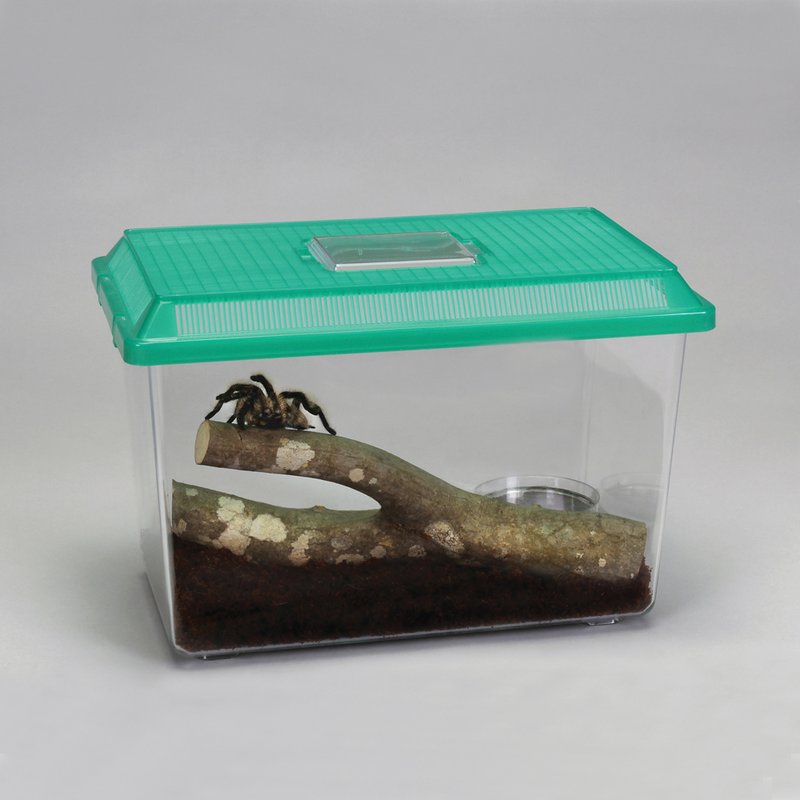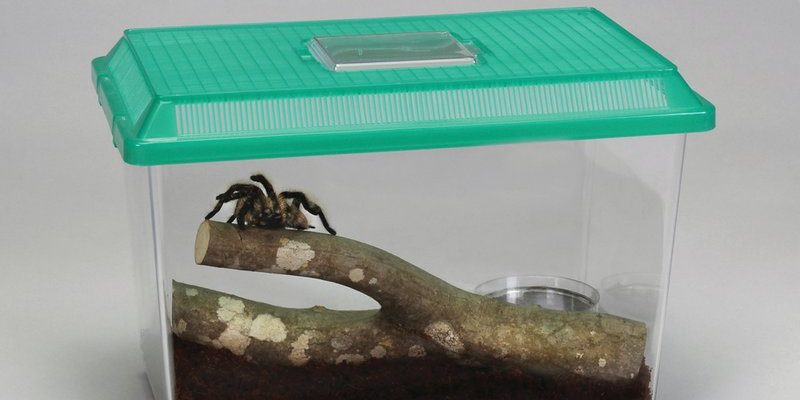
Curly hair tarantulas, also known as *Brachypelma albopilosum*, are native to Central America and thrive in warm, humid conditions. Their name comes from the curly hairs that give them a unique and adorable appearance. Setting up the perfect terrarium for your curly hair tarantula means recreating their natural habitat as closely as possible. So, let’s dive into the essentials you’ll need to create a thriving home for your eight-legged friend.
When selecting a terrarium, size does matter! For a curly hair tarantula, a 10-gallon tank is often suitable for adults, while a smaller setup may work for slings or juveniles. Here’s the thing: while these tarantulas don’t require vast spaces, they do appreciate a bit of room to roam and explore.
A taller terrarium is generally better than a wide one since curly hair tarantulas like to climb and web. Make sure your terrarium has a secure lid, as these curious critters are excellent escape artists. You’d be surprised how quickly a tarantula can disappear if given the chance!
The substrate you choose is important for your tarantula’s health. A mix of coconut coir and peat moss works wonders, as it helps maintain humidity while providing a soft surface. Aim for a depth of about 2-4 inches.
Why so deep? Curly hair tarantulas like to borrow, and a nice, deep substrate allows them to dig and create burrows, mimicking their natural behavior. Plus, adding a bit of leaf litter or dried moss on top will not only look nice but also help keep humidity levels stable.
Curly hair tarantulas thrive in warm conditions, so maintaining the right temperature is crucial. Keep the tank around 75°F to 80°F during the day and drop it to around 65°F to 70°F at night. Use a reliable thermometer to keep track of the temperature.
As for humidity, these tarantulas prefer it around 60-70%. You can achieve this by lightly misting the substrate and adding a water dish. Just be cautious not to soak the substrate too much, as excessive moisture can lead to mold growth. Your spider will appreciate a humid, warm atmosphere, much like a tropical vacation!
Let’s talk about décor. Curly hair tarantulas love to feel secure, so providing plenty of hiding spots is essential. Use items like cork bark, flat rocks, or even commercial hides designed for reptiles. These not only give your spider a place to retreat, but they also create a more interesting environment to explore.
You might also want to add some silk plants or live plants that can thrive in humid conditions. Just be sure they’re non-toxic. A bit of décor can spruce up the terrarium and mimic their natural habitat, giving your tarantula a sense of security and comfort.
Water is vital for your tarantula, but they don’t need much. A shallow water dish is sufficient. Change the water regularly to keep it clean and fresh. Honestly, it’s one of the simplest tasks you’ll have, but it makes a big difference in their health.
Curly hair tarantulas can also absorb moisture through their skin from the humid environment, so maintaining humidity is just as critical as providing a water source. Just keep an eye on the dish—tarantulas can be messy drinkers!
Feeding your curly hair tarantula is pretty straightforward. They thrive on a diet of crickets, roaches, and other insects. The general rule is to feed them prey that’s about the same size as their body.
When feeding, it’s best to do it in the evening. Tarantulas are nocturnal, and they’re much more active at night. Let’s not forget to remove any uneaten food within 24 hours, as it can lead to stress or health issues for your spider.
Lighting for your curly hair tarantula doesn’t have to be overly complex. A simple ambient light is enough. You don’t need bright lights, as tarantulas are mostly nocturnal and prefer a darker environment. That said, mimic natural light cycles by providing about 12 hours of light and 12 hours of darkness.
Using a low-wattage bulb can help maintain the temperature during the day without causing overheating. Just keep the light away from the tank to prevent direct heat exposure.
Once your setup is complete, monitoring your tarantula’s health and behavior is key to ensuring they thrive. Look for signs of molting, which can indicate they’re growing. You might notice them becoming more secretive or lethargic before they shed their skin.
If you notice any unusual behavior, such as refusing food for an extended time or visible signs of stress, it’s crucial to reevaluate their habitat conditions—temperature, humidity, or perhaps the presence of adequate hiding spots. A happy tarantula will often be active at night, exploring its space and webbing.
Creating a suitable terrarium setup for your curly hair tarantula doesn’t have to be overwhelming. With the right supplies and a bit of care, you can create a thriving environment that meets their needs and keeps them happy. Remember to enjoy the process—after all, setting up your furry friend’s home is just as rewarding as watching them thrive in it!

